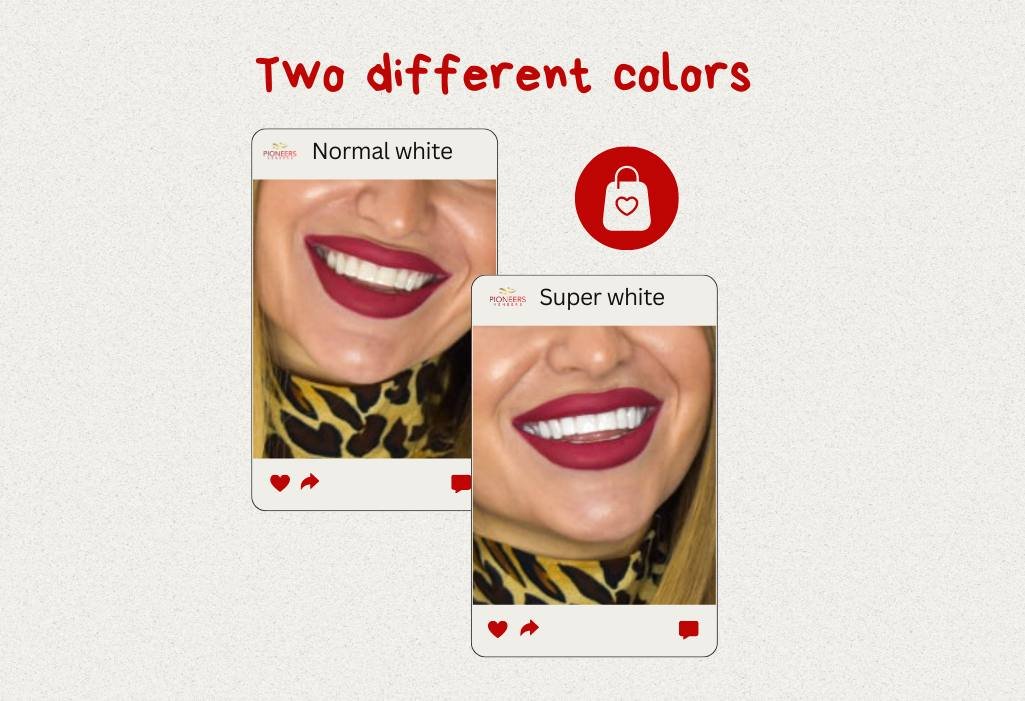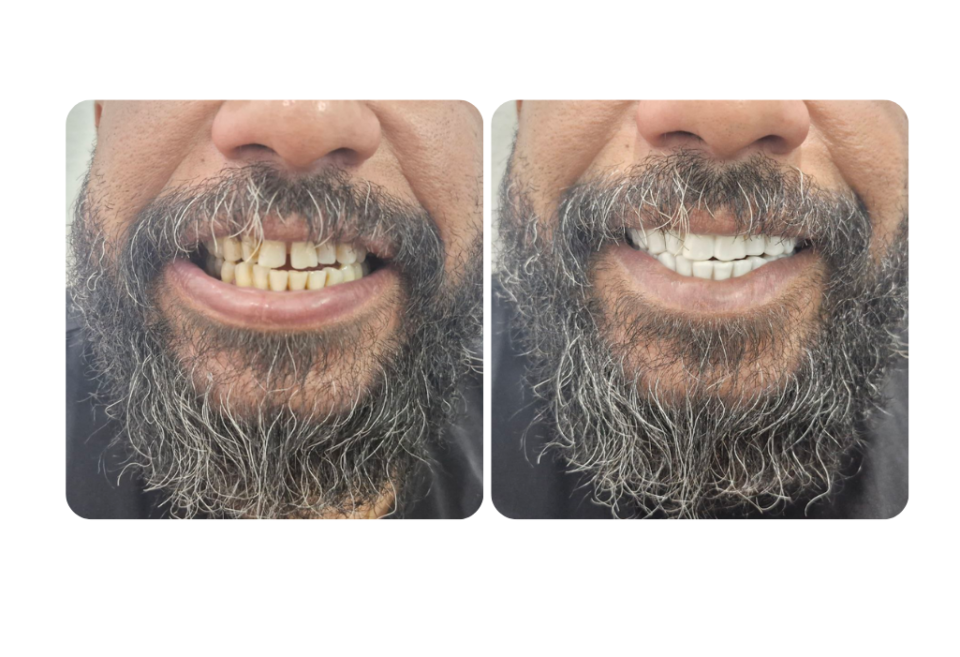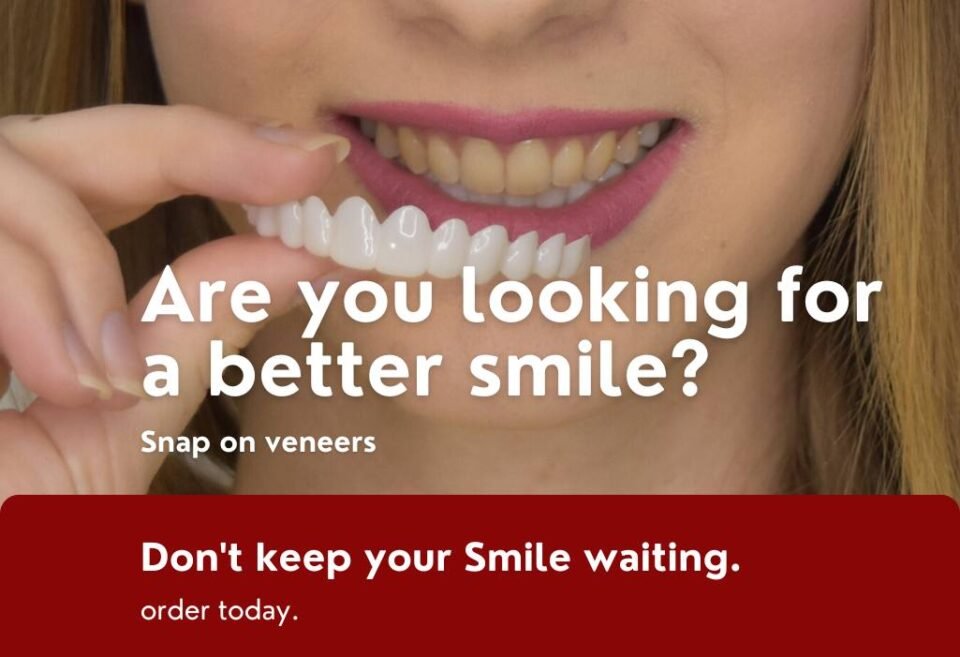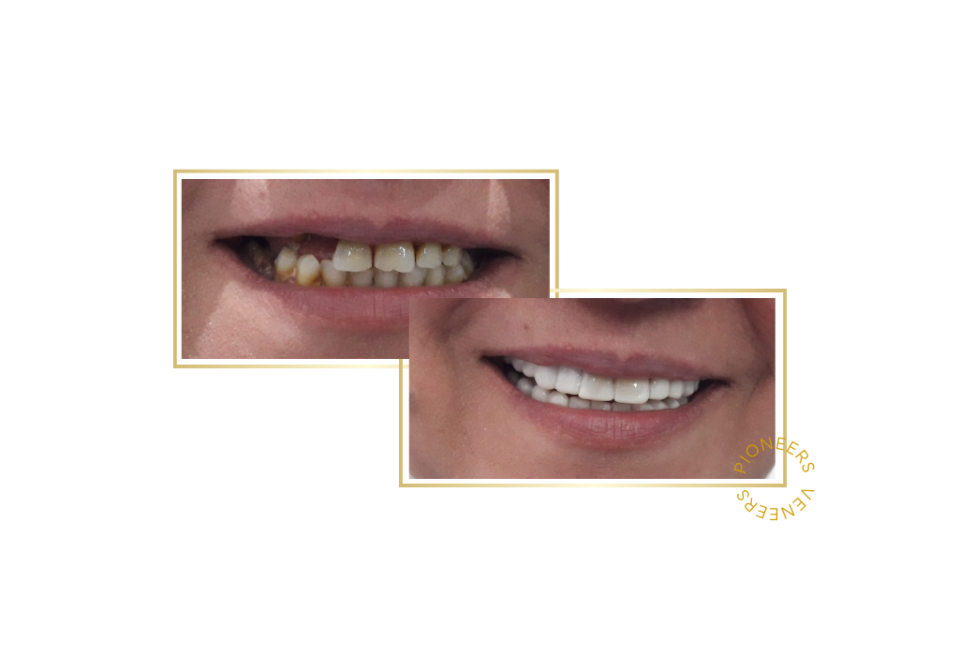
Snap on veneers is the current smile makeover
February 16, 2024
New Life with Pioneers Veneers Snap on veneers
February 25, 2024Snap-on veneers are an increasingly popular dental solution that has gained significant attention and recognition in recent years. With its potential to transform smiles and boost self-confidence, it has become an appealing option for individuals seeking a non-invasive, cost-effective alternative to traditional veneers. In this essay, we will explore the concept of clip-on veneers, their composition, advantages, disadvantages, and the potential impact they can have on both oral health and personal well-being.
A clip-on veneer, also known as a removable veneer, is a dental device made of thin, durable material that is custom-made to fit over natural teeth, providing an instant transformation of one’s smile. These veneers are typically made from high-quality dental resin, ensuring they are sturdy and resilient. The design of these veneers allows for easy application and removal, making them a convenient option for those looking to enhance their smile temporarily, without the need for permanent alterations.

The main advantage of clip-on veneers is their ability to address various cosmetic dental concerns. They serve as a cosmetic cover for teeth that may have gaps, chips, stains, or minor misalignments. By using a clip-on veneer, an individual can achieve the appearance of perfectly straight, white teeth without undergoing complex and expensive dental procedures like orthodontics or teeth whitening. Additionally, clip-on veneers can be fashioned to match the natural enamel shade of one’s teeth, ensuring a seamless, aesthetically pleasing result.
Another noteworthy advantage of clip-on veneers is that they can be easily removed whenever desired. This allows individuals to maintain their natural teeth’s health by practicing regular oral hygiene routines, such as brushing and flossing, without any hindrances. Moreover, the non-invasive nature of this dental treatment means that no drilling or reshaping of natural teeth is required, minimizing the risk of potential complications typically associated with permanent veneers or other extensive dental procedures.
Despite their potential benefits, it is crucial to acknowledge the potential disadvantages of clip-on veneers. First and foremost, these veneers are primarily a cosmetic solution and do not alter the underlying dental issues that may be present. For individuals seeking a solution to structural tooth problems or severe misalignments, clip-on veneers may not be suitable, as they only provide a temporary cosmetic fix.
Moreover, clip-on veneers do have their limitations in terms of durability and longevity. These veneers are more prone to damage compared to permanent veneers since they are removable and not permanently adhered to the teeth. Individuals must be cautious while eating hard or sticky foods and avoid biting on hard objects to avoid damaging the veneers. Additionally, regular cleaning and maintenance are essential to ensure the longevity and effectiveness of the veneers.
When considering the impact of clip-on veneers on both oral health and personal well-being, it is vital to recognize their ability to provide individuals with an immediate confidence boost. Aesthetic concerns regarding teeth can significantly impact self-esteem and social interactions. By addressing these concerns, individuals may experience increased self-assurance, improved self-image, and enhanced overall happiness.

In conclusion, clip-on veneers have emerged as a viable, non-invasive dental solution for individuals seeking a convenient and temporary cosmetic fix for their dental concerns. While they offer numerous advantages, such as versatility, easy application, and removal, it is crucial to bear in mind their limitations, temporary nature, and the importance of regular maintenance. By understanding the potential benefits and disadvantages of clip-on veneers, individuals can make informed decisions about whether this dental treatment aligns with their goals and expectations, ultimately leading to a confident and radiant smile.
Introduction:
Snap-on veneers have gained popularity among individuals seeking a temporary solution to enhance their smile. While these dental prosthetics offer a range of benefits, there are certain considerations when it comes to eating with snap-on veneers. This essay aims to provide a comprehensive guide for college students who have embraced these veneers as a means to enhance their appearance.

1. Understanding Snap-on Veneers:
Snap-on veneers are removable dental prosthetics designed to improve the aesthetics of one’s teeth. They are customized to fit over the natural teeth, providing an instant improvement in appearance and confidence.
2. Food Selection:
When it comes to eating with snap-on veneers, it is essential to be mindful of the food choices. Opt for softer foods such as mashed potatoes, cooked vegetables, yogurt, and soup. These foods are easy to chew and less likely to pose a risk of damaging or dislodging the veneers.
3. Avoid Hard and Sticky Foods:
College students should avoid consuming hard and sticky foods, as they can potentially damage the snap-on veneers. Nuts, popcorn, hard candies, and chewing gum should be consumed with caution or avoided altogether.
4. Cut Food into Smaller Pieces:
To ensure a comfortable eating experience, it is advisable to cut food into smaller pieces. This reduces strain on the veneers and minimizes the risk of accidental damage.
5. Slow and Deliberate Chewing:
College students should develop a habit of chewing their food slowly and deliberately, especially with snap-on veneers. This allows for better digestion and reduces the likelihood of any undue pressure on the veneers.
6. Proper Oral Hygiene:
Maintaining good oral hygiene is crucial when using snap-on veneers. College students should continue to brush their teeth twice a day, floss regularly, and use mouthwash recommended by their dentist. Clean the veneers thoroughly after each meal using a toothbrush specially designed for this purpose.
7. Avoid Staining Beverages:
Certain beverages like coffee, tea, and red wine have the potential to stain the veneers. To maintain their whiteness and prolong their lifespan, college students should minimize their consumption of such beverages or use a straw to prevent direct contact with the veneers.
8. Regular Dental Check-ups:
College students with snap-on veneers should not neglect regular dental check-ups. This ensures that any potential issues or damage are detected early and addressed promptly. Dentists can provide valuable advice on maintaining the veneers and make any necessary adjustments if needed.



9. Handling Accidental Damage:
In the unfortunate event of accidental damage to the snap-on veneers, college students should contact their dentist immediately. Attempting to fix or modify the veneers themselves can lead to further complications and damage.
10. A Temporary Solution:
Lastly, it is important for college students to remember that snap-on veneers are a temporary solution. While they can provide a significant confidence boost, consulting a dentist regarding a more permanent and suitable solution is advisable for long-term dental health.
Conclusion:
Eating with snap-on veneers requires careful consideration and attention to preserve their integrity. College students must be mindful of food choices, chewing techniques, and oral hygiene practices. By following the guidelines provided in this essay and staying in regular communication with their dentist, college students can enjoy the benefits of enhanced smile aesthetics while maintaining proper dental health.




